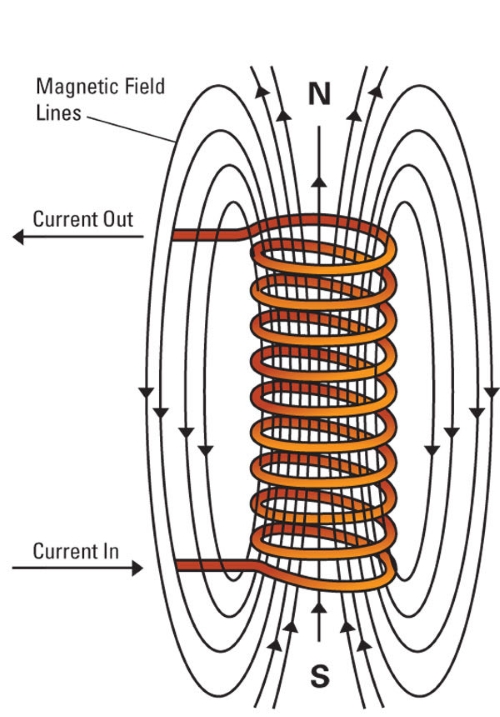Electromagnets vs. Permanent Magnets: Differences and Uses
Introduction
Magnets play a fundamental role in modern technology, serving various functions across industries such as electronics, medical devices, manufacturing, and power generation. Two primary types of magnets are electromagnets and permanent magnets, each with distinct characteristics that make them suitable for specific applications. Understanding the differences between these magnets and their uses helps highlight the versatility and importance of magnetic technologies in our daily lives.
What Are Electromagnets?
Electromagnets generate magnetism through the flow of electric current. When an electric current passes through a coil of wire, it creates a magnetic field. This effect can be amplified by wrapping the wire around a ferromagnetic core, such as iron, which strengthens the magnetic field.

Unlike permanent magnets, electromagnets offer the unique advantage of controlling magnetism—turning it on and off with the flip of a switch by managing the electric current. Moreover, the strength of the magnetic field can be increased or decreased by adjusting the current or the number of wire coils.
Related reading: Electromagnets in Everyday Life: From Healthcare to Transportation
What Are Permanent Magnets?
Permanent magnets, on the other hand, derive their magnetic field from the internal alignment of their atoms. This magnetic field is constant, meaning it doesn’t require any external energy source, such as electricity, to function.
The most commonly used materials for permanent magnets include ferrite, alnico, and rare-earth elements like neodymium. Permanent magnets are widely recognized for their longevity and ability to maintain magnetism over time unless exposed to conditions like extreme heat or mechanical impact.
Related reading: Types and Uses of Permanent Magnet
Key Differences between Electromagnets and Permanent Magnets
1. Source of Magnetism:
- Electromagnets: The magnetic field in an electromagnet is generated by electricity. The current running through a coil of wire creates the magnetic field, which disappears once the current is turned off.
- Permanent Magnets: The magnetic field of a permanent magnet is inherent and does not require electricity. The atoms within the material are naturally aligned to produce a persistent magnetic field.
2. Control over Magnetic Strength:
- Electromagnets: One of the significant advantages of electromagnets is the ability to adjust the strength of the magnetic field. By changing the current flowing through the coil or altering the number of coils, the magnetism can be easily controlled and modified.
- Permanent Magnets: In contrast, permanent magnets have a fixed magnetic strength determined by the material’s composition. Once manufactured, their magnetic force cannot be easily changed.
3. Polarity and Flexibility:
- Electromagnets: The polarity of an electromagnet can be reversed by switching the direction of the electric current. This flexibility is valuable in applications like electric motors, where the direction of the magnetic field needs to change rapidly.
- Permanent Magnets: The polarity of permanent magnets is fixed and cannot be reversed without physically reorienting the magnet.
4. Duration of Magnetism:
- Electromagnets: Magnetism in an electromagnet only lasts as long as an electric current flows through the coil. When the current stops, so does the magnetic field.
- Permanent Magnets: Permanent magnets maintain their magnetic field indefinitely, making them reliable for long-term applications without the need for energy input.
5. Energy Requirement:
- Electromagnets: These require a continuous supply of electrical energy to maintain their magnetic field, which can make them energy-intensive depending on the application.
- Permanent Magnets: Since they don’t require an external power source, permanent magnets are more energy-efficient and suitable for applications where a constant magnetic field is needed without energy consumption.
Common Uses of Electromagnets
Electromagnets find their use in numerous technologies where controlled magnetism is necessary. Some of the key applications include:
- Electric Motors and Generators: Electromagnets convert electrical energy into mechanical motion in motors or mechanical energy into electrical energy in generators. This technology is used in everything from household appliances to industrial machines.
- Magnetic Lifting Devices: In industries such as construction and scrap metal processing, electromagnets are used to lift and move heavy metallic objects. The ability to turn the magnet on and off is crucial for these applications.
- Medical Imaging (MRI Machines): Magnetic Resonance Imaging (MRI) machines use powerful electromagnets to generate a magnetic field that provides detailed images of the body’s internal structures.
- Relays and Switches: Electromagnets are widely used in relays and switches to open and close circuits by creating a magnetic pull when electricity flows, enabling remote or automatic control.
- Electromagnetic Locks: These locks use electromagnets to secure doors. They engage when electricity is supplied and disengage when the power is turned off, making them useful in security systems.
Common Uses of Permanent Magnets
Permanent magnets are preferred for applications where a constant magnetic field is needed. Some typical uses include:
- Speakers and Microphones: Permanent magnets are essential in audio devices, converting electrical signals into sound waves or vice versa.
- Refrigerator Magnets: These are everyday examples of permanent magnets, used to attach objects to metal surfaces like a refrigerator door.
- Magnetic Fasteners: Permanent magnets are used in various fastening systems to provide a reliable, strong attachment without the need for additional components.
- Electric Generators: Permanent magnets play a key role in generating electricity by interacting with coils of wire to produce electrical energy.
- Compasses: Magnetic compasses use permanent magnets to align with the Earth’s magnetic field, providing direction for navigation.
Conclusion
Both electromagnets and permanent magnets play essential roles in modern technology. Electromagnets offer flexibility and control, making them ideal for dynamic systems like motors and relays. Permanent magnets, with their constant magnetism, provide reliability and efficiency in long-term applications such as speakers and fastening systems.
Together, these magnets drive innovations in industries from medicine to manufacturing, underscoring the significance of magnetic technologies in everyday life. For more information, please visit Stanford Magnets.
Reference:
[1] Northeastern University (2024, October 10). Electromagnets. Retrieved October 10, 2024, from https://ece.northeastern.edu/fac-ece/nian/mom/electromagnets.html














